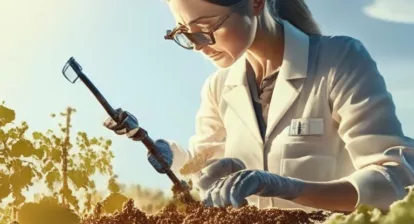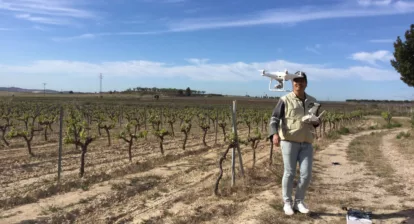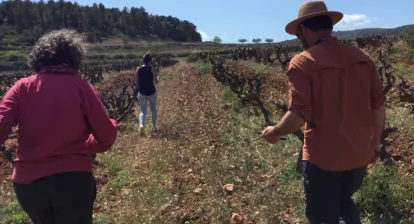In April, the first VIN-Q experiment took place in Catalonia, Spain, involving 11 vineyards that practice or have interest in starting regenerative agriculture management. The experiment was conducted on the 12th, 17th and 19th of April, with four researchers visiting each vineyard in eleven different locations. They represented a total of nine experiments of which five were related with soil health.
In this blog post, we will discuss the results of the soil experiment conducted by Isadora Schmidt from Terra Viva, which is a part of a distributed experiment aiming to compare all 11 vineyards in different climate zones and soil conditions. Within the scope of this distributed experiment, Terra Viva offered its services to collect samples for all soil health experts involved in this research initiative and openly share information and soil samples.
We are focusing on the outcome of the microbiology analysis conducted by Terra Viva and next posts will discuss the outcomes of other experiments. A brief description of the experiments includes:
- Drones managed by Jonathan Minchin from ICAERUS project provided an image of the vineyards to identify homogeneous areas for the soil extraction. Areal images provided the overview of the land and identified the inhomogenieties in vegetation and soil conditions. Also they were able to capture humidity differences on the soil. NDVI camera provide the vegetation index of the cover crops and vineyards.
- Topography of the land in 3D models, which allows to see small variations of soil composition.
- Close look multispectral cameras provided 3D structure of each plant in various spectra.
- Cover crops photos analyzed by AI to identify plant species and biodiversity of cover crops area.
- Isadora took samples of three randomized locations for each vineyard with a total of 33 samples extracted. Samples were extracted using soil probe and they were stored on sterilised bags to ensure sample integrity. Soil samples were analysed within a 48-hour period to ensure the viability of the sample.
- The other samples collected as part of the distributed experiment were sent to four laboratories for analysis (UK, Germany, Spain and France).
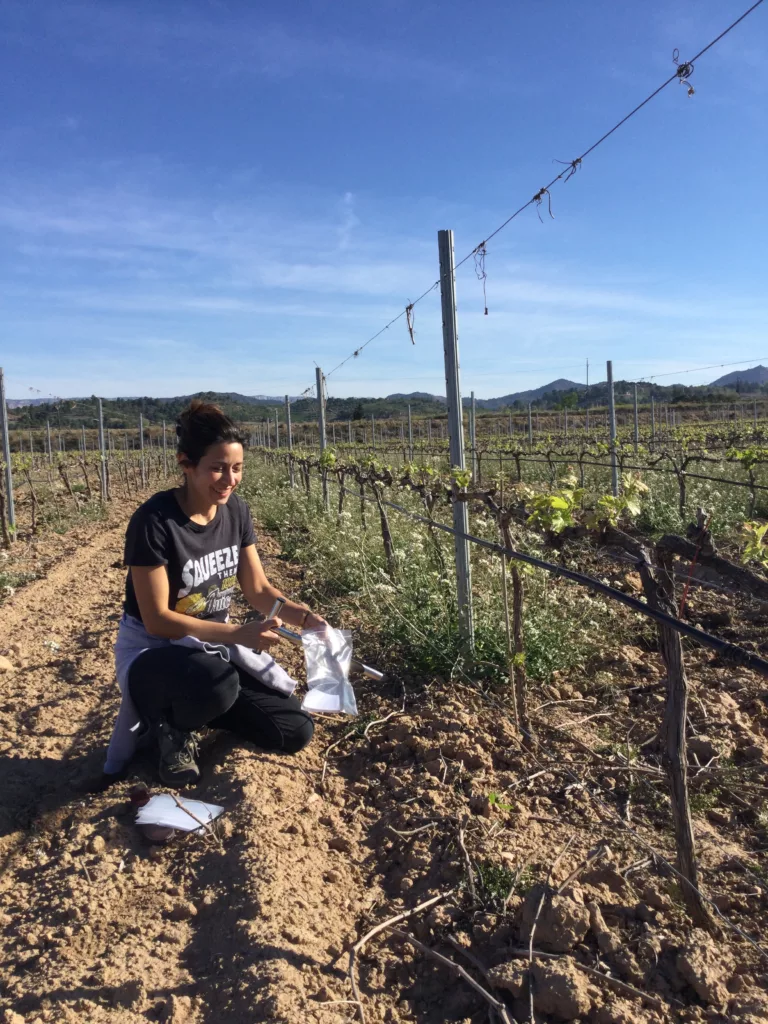
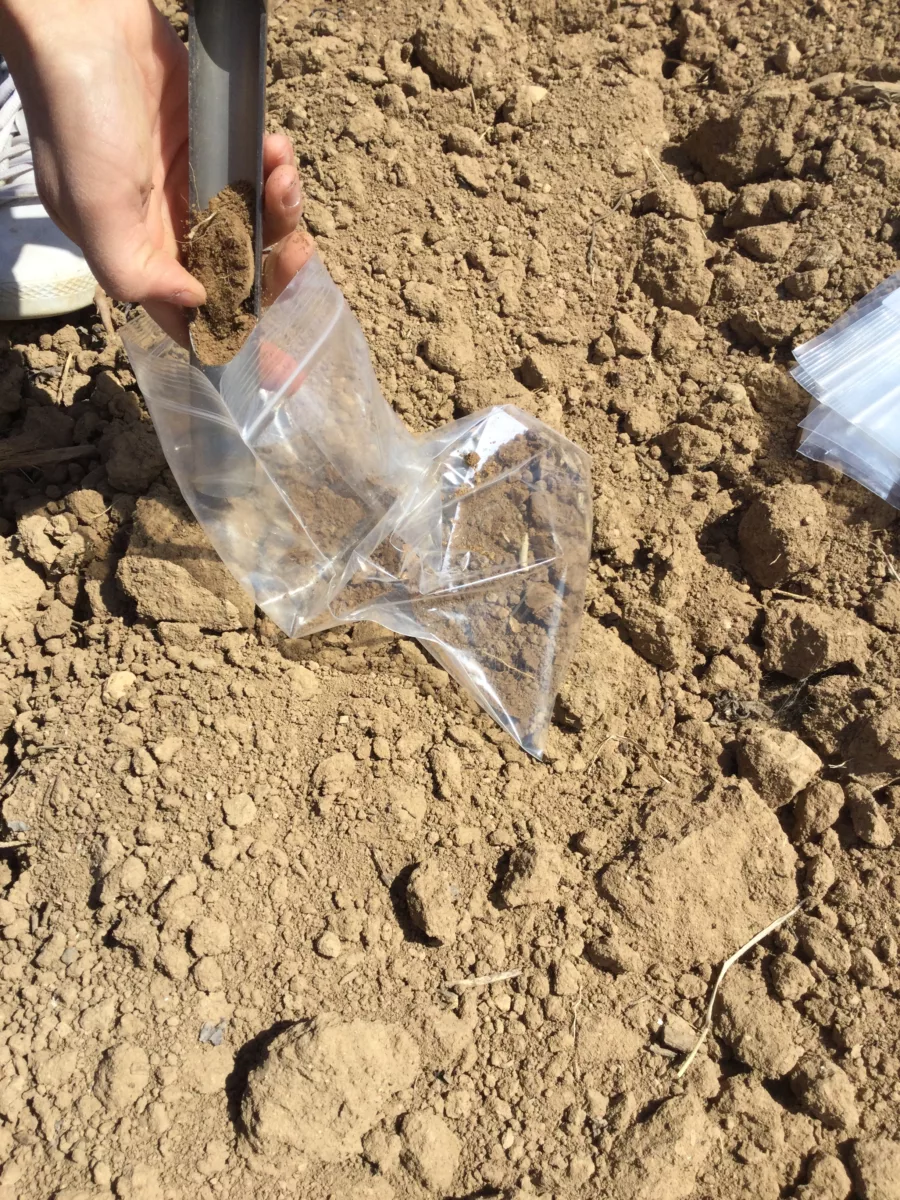
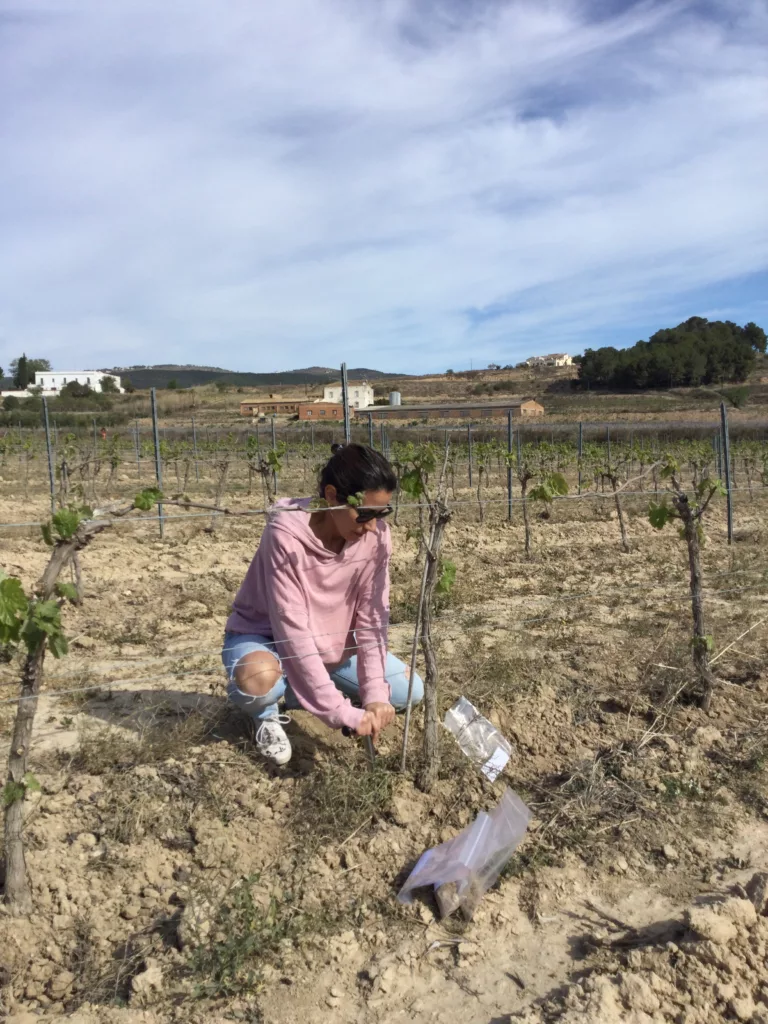
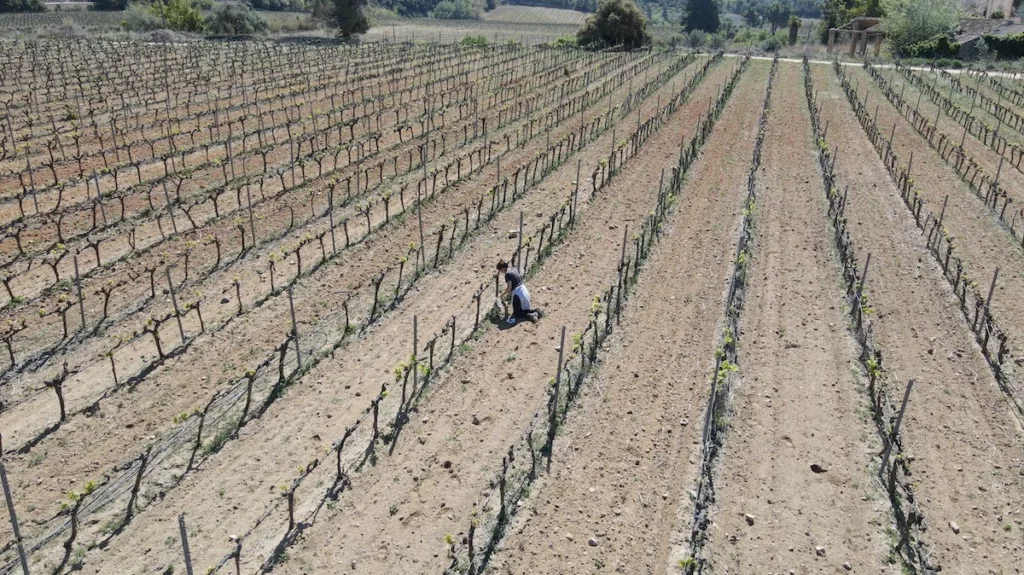
While Priorat and Penedes regions may share some similarities in their viticulture practices, they also face unique challenges. In Penedes, one of the biggest challenges is the semi-arid Mediterranean climate, which can lead to drought and water scarcity during large part of the year. Additionally, vineyards in Penedes are often located on slopes, which can make management and harvesting more difficult. In Priorat, on the other hand, the rugged terrain and steep slopes can make it challenging to plant and maintain vineyards, and the region is also prone to wildfires. However, both regions have a strong focus on sustainable viticulture, and are working to address these challenges through innovative techniques and technology.
The Vin-Q experiment yielded valuable information about the health of the vines’ soil. The parameters analyzed included total bacterial biomass, total fungal biomass, fungal to bacterial ratio, protozoa (flagellates, amebae and ciliates), and nematodes. It provides a valuable insight into the health and functioning of the soil ecosystem: how the nutrients are being cycled, pest and disease suppression, information on diversity and soil structure and aggregation.
| Term | Description | Desired Range in Vineyards (per gram of soil) |
| Bacterial biomass | The total mass of living bacteria in a given sample or environment. | 135-1.350 µg/g |
| Fungal biomass | The total mass of living fungi in a given sample or environment. | 270 – 6.750 µg/g |
| F:B ratio | The ratio between the total fungal biomass and the total bacterial biomass . | 2:1 – 5:1 |
| Protozoa | A group of single-celled organisms that primarily feed on bacteria and algae. | >50.000/g |
| Flagellates | A type of aerobic protozoa | – |
| Amoebae | A type of aerobic protozoa | – |
| Ciliates | A type of protozoa that can be an indicative of anaerobic conditions | – |
| Nematodes | A group of worm-like organisms | – |
| Bacterial feeding nematodes | Primarily feed on bacteria. | 300 |
| Fungal feeding nematodes | Organisms that primarily feed on fungi. | 200 |
| Predatory nematodes | Organisms that feed on other organisms (prey) to obtain their nutrition. | 100 |
| Root feeding nematodes | Parasitic organisms that live on or within plant tissues and obtain their nutrients from the host plant. | – |
| Oomycete biomass | The total mass of living oomycetes, a type of fungi-that can be pathogen. | – |
The results showed that the soil health varied widely among the vineyards, with some having highly fertile soils and others with poor soil quality. The following chart describes the outcome of the analysis and the desire range for a suited soil.
| Bacterial biomass | Fungal biomass | F: B ratio | Total Protozoa | Total beneficial nematodes | |
| 1 | 1.005 µg/g | 245 µg/g | 0,02:1 | 798.000 /g | 0 |
| 2 | 2.586 µg/g | 49 µg/g | 0,02:1 | 0 | 0 |
| 3 | 24.706 µg/g | 170 µg/g | 0,01:1 | 0 | 0 |
| 4 | 3.102 µg/g | 200 µg/g | 0,06:1 | 0 | 0 |
| 5 | 2.384 µg/g | 81,7 µg/g | 0,03:1 | 0 | 0 |
| 6 | 2.800 µg/g | 416 µg/g | 0,07:1 | 0 | 0 |
| 7 | 4.998 µg/g | 1.113 µg/g | 0,2:1 | 798.000/g | 0 |
| 8 | 22.695 µg/g | 477 µg/g | 0,02:1 | 319.000/g | 0 |
| 9 | 3.045 µg/g | 3.138 µg/g | 1:1 | 478.800/g | 0 |
| 10 | 4.941 µg/g | 665 µg/g | 0,1:1 | 159.600/g | 0 |
| 11 | 6.664 µg/g | 657 µg/g | 0,1:1 | 0 | 0 |
The desired range for each parameter in vineyards per gram of soil is as follows: bacterial biomass (135-1,350 µg/g), fungal biomass (270 – 6,750 µg/g), fungal to bacterial ratio (2:1 – 5:1), protozoa (>50,000/g), bacterial feeding nematodes (300), fungal feeding nematodes (200) and predatory nematodes (100).
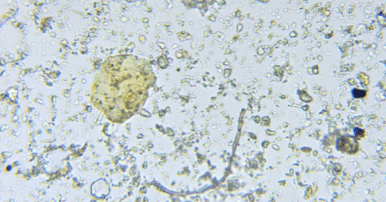

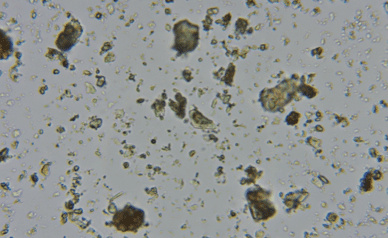
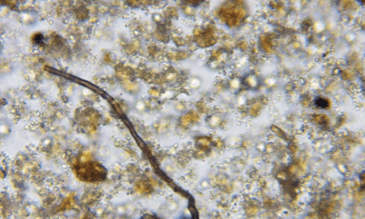
The results in general show low fungal biomass and an incomplete soil food web, with a low variety of protozoa and no beneficial nematodes. Protozoa and nematodes are extremely important for controlling a bacterial population and increasing nutrient cycling. Nematodes, for example, can eat up to 10,000 bacteria a day. Fungal dominance in vineyard soils is crucial for optimizing nutrition and enhancing water availability. It is relevant to mention that these are just one analysis in a specific time of the year, i.e. early spring, in a severe draught span.
Variations in soil health among the vineyards can be attributed to several factors, including soil management practices, terroir, and type of wine grape. It is common to see these types of results due to the common management practices such as tilling and addition of fungicides. Unfortunately, most common practices have a negative direct impact on soil microbiology.
If you are interested in soil analysis services, Terra Viva is here to help. Terra Viva offers a range of services, including soil food web microscopy analysis, consulting, and training on living soils, microscopy, and composting systems. Contact Terra Viva at [email protected] or call (+34) 652 608 806 to learn more. VIN-Q and the 11 vineyards were very lucky to count with Isadora expertise.
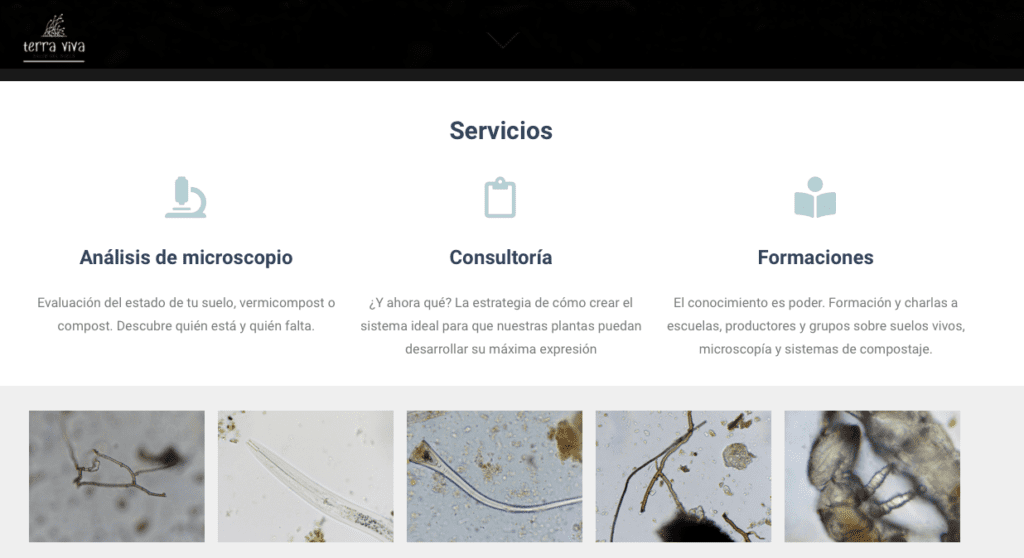
You can also join Vin-Q community and be part of research initiatives. Vin-Q is a decentralized approach to scientific experimentation that enables testing and validating new methodologies and tools by transforming scattered vineyards with different soil conditions and microclimates into a coherent research infrastructure.
To improve the scientific results and global knowledge through participatory research, Vin-Q is looking for projects with funding to increase the number of parameters analyzed, such as water availability, nutrient content, and pesticide residues. If you are a researcher or a vineyard owner interested in VIN-Q, get in touch!


